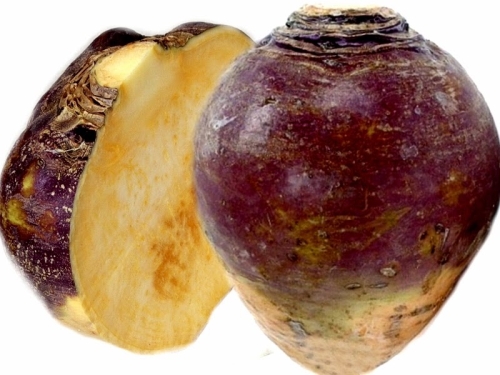

What's So Great about Rutabaga?
- Rutabagas are an excellent source of vitamin C, and a good source of potassium, fiber, and vitamin A.
- Rutabagas are low in calories and are fat free.
- Rutabaga's sweet, mildly peppery flesh makes great side dishes.
- Rutabagas are tasty in salads, soups, and stews.
- Rutabagas are inexpensive.

Selecting and Storing Rutabaga
Rutabagas are available all year. But these root vegetables are best in fall. Rutabagas are often trimmed of taproots and tops. When found in the grocery store, they are coated with clear wax to prevent moisture loss.
Look For
Firm, smooth vegetables with round, oval shape. Rutabagas should feel heavy for their size.
Avoid
Avoid rutabagas with punctures, deep cuts, cracks, or decay.
Storage
Rutabagas keep well. Refrigerate in a plastic bag for two weeks or more. If stored at room temperature, rutabagas will last a week.
Why is Potassium Important?
Eating a diet rich in potassium and lower in sodium is good for your health. Potassium is an electrolyte that helps keep body functions normal. It may also protect against high blood pressure. Potassium is found in fruits and vegetables.
Root vegetables, like rutabagas, are good sources of potassium. Most adults get adequate amounts of potassium in their diet. To be sure you are eating enough, go to MyPlate.gov to see how many fruits and vegetables you need each day. Although there are many sources of potassium, consult your health care provider before using supplements and salt substitutes.